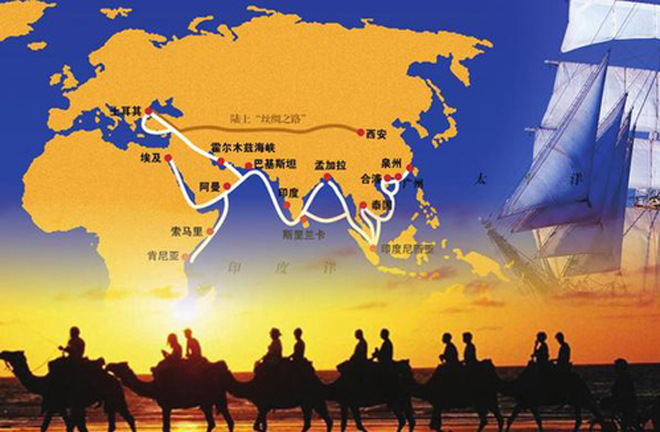QIU CHANGQING: ‘One Belt, One Road’fuels South-South cooperation

Passing through many developing countries in Asia, North Africa, Oceania, and Europe, China’s “One Belt, One Road” initiative can promote South-South cooperation.
The routes of China’s “One Belt, One Road” initiative will pass through many developing countries in Asia, North Africa, Oceania, and Central and Eastern Europe, making the project an important vehicle for South-South cooperation.
South-South cooperation presents an opportunity for developing countries to engage in mutual assistance in the fields of economics, technology and trade while offering an approach to self-reliance and independent development as well as a platform for participation in the international system.
As a developing country, China considers South-South cooperation a crucial component of foreign relations, and the “One Belt, One Road” strategy is one manifestation of this policy.
China should maximize the synergy between the “One Belt, One Road” initiative and South-South cooperation while relying on the vast number of developing nations along the routes and multilateral frameworks, such as partnerships with the United States, in order to win more support from the international community and develop a new model of South-South cooperation.
Traditional South-South cooperation is restricted to economic and trade fields. By contrast, the “One Belt, One Road” strategy covers neighboring diplomacy, economic cooperation, regional governance and infrastructure construction, which highlights the new idea of cooperation and mutual benefit and will further promote future South-South cooperation.
First, the “One Belt, One Road” initiative aims to build a community of common destiny through a sharing mechanism. Under this mechanism, China can make the most of its advantages to promote development with assistance, encourage cooperation through development and foster common prosperity with cooperation. Thus, China, together with other developing nations along the routes, can form a community with a shared fate and responsibility.
Second, the “One Belt, One Road” initiative emphasizes openness and inclusiveness. Any nation or region that is willing to participate in the cooperation can join in the project.
Moreover, “One Belt, One Road” will link up with the existing multilateral cooperative mechanisms, such as the Shanghai Cooperation Organization, China-ASEAN Cooperation and the Asia-Pacific Economic Cooperation, and cater to development strategies of those member states to involve more nations and regions in its construction.
However, this does not entail forcing other developing countries to accept China’s initiatives and standards. It is a policy of seeking common ground based on mutual respect and negotiating on a compromising standard. And the “One Belt, One Road” initiative complements rather than replaces existing mechanisms.
Last but not least, the construction of “One Belt, One Road” can be a significant part of the UN post-2015 development agenda. At present, the UN and the international community have been working to achieve the Millennium Development Goals and establish the agenda of global development beyond 2015. At this critical juncture, China should share its development experience, especially in terms of infrastructure and manufacturing, with other developing nations along the routes while implementing the “One Belt, One Road” initiative.
In the future, the “One Belt, One Road” initiative should guide the establishment of the post-2015 agenda to concentrate on difficulties and challenges in developing countries. This can help win international support for and remove doubts over the Chinese initiative.
To conclude, the construction of “One Belt, One Road” has created favorable opportunities for further development in China and other nations along the routes and provided a driving force for deepening South-South cooperation in the new era. Through “One Belt, One Road,” the outcomes and experience of China’s development can be brought to more developing nations. Thus, mutual benefit can be achieved among developing countries to break new ground for South-South cooperation.
Qiu changqing is from the School of International Relations at the University of International Business and Economics.
